September 10, 2003
Dear Family and Friends,
When we woke yesterday to a dusting of snow on the back range,
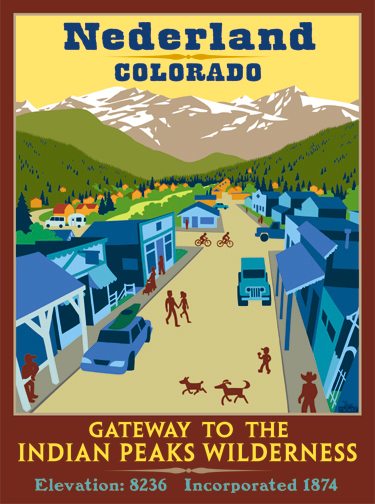 we knew summer was over and our beautiful fall season was upon
us. The warmth of the summer mornings is now gone when we walk up to get the paper.
We had a drizzling rain over the weekend that washed the ground and the air
hinted at a change in temperature. (We also had a good-sized wind that knocked
out power for a few hours Monday night! All part of the charm of mountain
living.) Only a few aspens have turned yellow; some say because of our dry
summer it will not be a good year for viewing the usually golden hillsides.
We’ll see in a few weeks.) In the meantime, above 11,000' the mountains are
white with the first snow of the year. The road to the top of
Mount Evans (14,264'), the country’s
highest paved road, was closed for the season this past week, the earliest
closure in recent memory. There is a winter storm warning for the San Juans
(Silverton area) with up to 10" of snow due today and tonight. Even Denver
may get a touch of white stuff within the week, though that’s only TV weather
forecaster speculation. (Note: as I’m writing this, the very light rain
that began a half hour ago has mixed with some small but obvious flakes of
snow. It won’t last the morning, of course, but it’s confirmation that summer
has past.)
we knew summer was over and our beautiful fall season was upon
us. The warmth of the summer mornings is now gone when we walk up to get the paper.
We had a drizzling rain over the weekend that washed the ground and the air
hinted at a change in temperature. (We also had a good-sized wind that knocked
out power for a few hours Monday night! All part of the charm of mountain
living.) Only a few aspens have turned yellow; some say because of our dry
summer it will not be a good year for viewing the usually golden hillsides.
We’ll see in a few weeks.) In the meantime, above 11,000' the mountains are
white with the first snow of the year. The road to the top of
Mount Evans (14,264'), the country’s
highest paved road, was closed for the season this past week, the earliest
closure in recent memory. There is a winter storm warning for the San Juans
(Silverton area) with up to 10" of snow due today and tonight. Even Denver
may get a touch of white stuff within the week, though that’s only TV weather
forecaster speculation. (Note: as I’m writing this, the very light rain
that began a half hour ago has mixed with some small but obvious flakes of
snow. It won’t last the morning, of course, but it’s confirmation that summer
has past.)
The end of Nederland’s summer season
is traditionally marked by the running of the Neder-Nederland High Altitude
Road Races held the Sunday after Labor Day, three days ago. As has usually
been the case since we’ve lived here, the day started out in the 50s with
a little wind and overcast skies. By the end of the race, the light rain
began to fall and the runners who stayed for awards huddled inside the pavilion
at the town park keeping warm, drinking juices and eating fruit while they
waited for the prizes and raffle drawings. Judy won her age group again in
the 5K race, making her undefeated since 1992 and winner of all four races
she entered this year starting in June. Amazing: she just keeps running and
winning.
Looking back on the past few months we’ve done our share of
hosting tourists at the Nederland Visitors Center, a volunteer “job” we both
enjoy. In this regard, I’ve had a chance to commission and work with a Boulder artist,
Steve Lowtwait, to create a series
of new designs for posters, T-shirts, postcards, and note cards promoting Nederland
as the “Gateway to the Indian Peaks Wilderness.” The design shown here is the
first in what will be a series of four: the second will promote winter sports, followed by
outdoor recreation (hiking, camping, fishing, biking, etc.), and finally a design that
promotes our area’s mining history.
We survived our ill-fated, over-heated, and (in retrospect)
amusing road trip north
in late July. We saw some entertaining and interesting movies at Nederland’s local
weekends-only theater (we would highly recommend “Whale Rider,” an outstanding
New Zealand 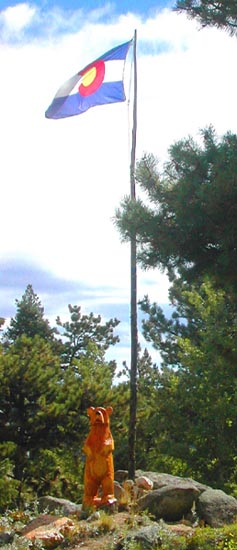 film). We completed our “55 Alive” driving class for the
third time (Colorado mandates reduced auto insurance rates if you take the course every
three years). We went to our Mystery Book Club meetings monthly. I joined a local “Slow
Jam” music making get-together on Thursdays (guitars, fiddles, piano, whistle, autoharp,
and mandolin: we play mostly simple Celtic and old timey stuff). These were our routines.
film). We completed our “55 Alive” driving class for the
third time (Colorado mandates reduced auto insurance rates if you take the course every
three years). We went to our Mystery Book Club meetings monthly. I joined a local “Slow
Jam” music making get-together on Thursdays (guitars, fiddles, piano, whistle, autoharp,
and mandolin: we play mostly simple Celtic and old timey stuff). These were our routines.
NEW MEMBERS OF THE FAMILY
You may have already read about the
San Juan River trip
 I took with grandson Griffin in June. Looking back, it was a treat for
me to have that time together. I think, despite a rock in his knee and a
severe sunburn, Griffin had a good time also. The trip, by the way, was
sponsored by Elderhostel and run by the Canyonlands Field Institute. Elderhostel
plans quite a few intergenerational trips that are especially for grandparents
and grandchildren. Most are not quite as physically demanding as the one
we took, but all emphasize activities that involve children and older folks
in a variety of learning situations. The only age requirement, bedsides varying
minimum ages for kids, is that the adults must be 55 years old and want to
continue learning. Griffin saw parts of the country that he might have only
read about or seen in a book; the four corners area is a world apart from
his home and travels in New England and other places he’s visited. In addition
to the five days of rafting the San Juan, we visited Arches and Canyonlands
National Parks, plus the birthplace of Mike the Headless Chicken!
I took with grandson Griffin in June. Looking back, it was a treat for
me to have that time together. I think, despite a rock in his knee and a
severe sunburn, Griffin had a good time also. The trip, by the way, was
sponsored by Elderhostel and run by the Canyonlands Field Institute. Elderhostel
plans quite a few intergenerational trips that are especially for grandparents
and grandchildren. Most are not quite as physically demanding as the one
we took, but all emphasize activities that involve children and older folks
in a variety of learning situations. The only age requirement, bedsides varying
minimum ages for kids, is that the adults must be 55 years old and want to
continue learning. Griffin saw parts of the country that he might have only
read about or seen in a book; the four corners area is a world apart from
his home and travels in New England and other places he’s visited. In addition
to the five days of rafting the San Juan, we visited Arches and Canyonlands
National Parks, plus the birthplace of Mike the Headless Chicken!
While Griffin and I were on the river,
Debra and Julia spent time with Judy hiking in the Indian Peaks Wilderness,
going horseback riding, a day at Six Flags/Elitch Gardens in Denver, hiking
through the Walker Ranch, and enjoying some leisurely shopping both in Nederland
and on the Pearl Street mall in Boulder. They were present to welcome a new
member of the family, Barney, our bus stop bear who stands patiently beneath
the flagpole greeting visitors to our house. Michael and Cindy claim they
found him hitchhiking around Fairplay (Colorado) while they were on a road
trip. He seemed nice enough, they said, and thought we would make him a good
home here. So, they brought him along. Barney adds another smile in our lives
each day as we walk back from getting the paper in the morning and the mail
in the afternoon.
Speaking of Barney, this summer we also welcomed
Jack as another
new family member. We found him in hanging out in Douglas, Wyoming, on our
midsummer road trip
north. Call him fabulous or fabled, call him a cruel joke, call him fake, call
him mythic—he’s real (as you can see in the photo on the right) and we call him
Jack.
Like Barney, he makes us smile every day.
HIKING IN THE INDIAN PEAKS AND ROCKY MOUNTAIN N.P.
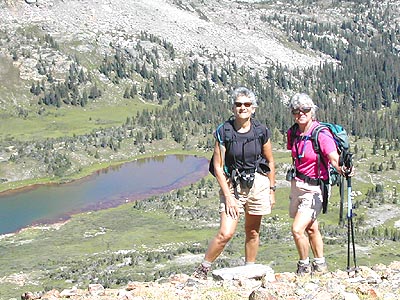 Judy has been a very active hiker throughout the summer. She and her
Boulder hiking friend, Betsy, have gone almost weekly into the mountains west and north of
here. Armed with field guides and binoculars, they’ve learned to identify most all of the
wildflowers of the region. It’s been a pleasure to go with them; though they take their
time, stopping and checking flowers in their field guides, together they are becoming
Judy has been a very active hiker throughout the summer. She and her
Boulder hiking friend, Betsy, have gone almost weekly into the mountains west and north of
here. Armed with field guides and binoculars, they’ve learned to identify most all of the
wildflowers of the region. It’s been a pleasure to go with them; though they take their
time, stopping and checking flowers in their field guides, together they are becoming
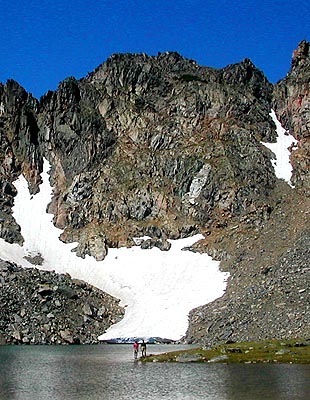 real experts on the flowers of the front range. Throughout the summer their hikes included
Ouzel Falls and Twin Sisters (in Rocky Mountain NP), Pawnee Pass, Isabelle Glacier, Diamond
Lake, Arapaho Pass and Lake Dorothy, and Niwot Ridge (all in the Indian Peaks Wilderness Area).
real experts on the flowers of the front range. Throughout the summer their hikes included
Ouzel Falls and Twin Sisters (in Rocky Mountain NP), Pawnee Pass, Isabelle Glacier, Diamond
Lake, Arapaho Pass and Lake Dorothy, and Niwot Ridge (all in the Indian Peaks Wilderness Area).
My knee surgery in early July was so successful that I was able to go
with them about a month later. The hike to Arapaho Pass (above) and Lake Dorothy (on the
right) with Judy and Betsy was the first real test of how my knee is going to strengthen.
It turns out that like walking around the house and climbing stairs, my knee felt normal.
The rest of me is a bit out of shape, but I’ve been loafing for a while. A few weeks ago,
while the weather was still magnificent, I went off on my own to Woodland Lake in the
Indian Peaks, a nine mile round trip that proved I’m ready to take on most any hike.
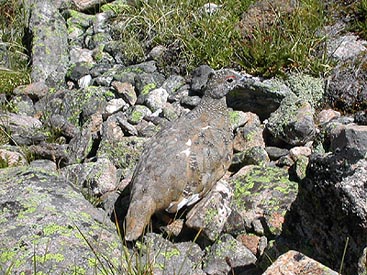 By the way, one of the most interesting animals to see in the high
country is the elusive
ptarmigan
(that’s him on the left). About the size of a small chicken, their primary means of
protection against predators is camouflage: their feather coloring changes with the
season—white in the winter, mottled in the summer—plus their habit of standing
quite still on the presumption that they aren’t or can’t be seen. When you do spot them
you can walk quite close to them because they think they’re invisible! I took this picture
from about three feet away. The rest of the “family,” including several young chicks were
equally still within ten feet of each other. I’ve never seen one fly or move very quickly,
though I assume they can and do when necessary.
By the way, one of the most interesting animals to see in the high
country is the elusive
ptarmigan
(that’s him on the left). About the size of a small chicken, their primary means of
protection against predators is camouflage: their feather coloring changes with the
season—white in the winter, mottled in the summer—plus their habit of standing
quite still on the presumption that they aren’t or can’t be seen. When you do spot them
you can walk quite close to them because they think they’re invisible! I took this picture
from about three feet away. The rest of the “family,” including several young chicks were
equally still within ten feet of each other. I’ve never seen one fly or move very quickly,
though I assume they can and do when necessary.
We may finally do it next summer:
stay here and enjoy the mountain recreation that 1000s of people flock to
from all over the world. Why should we leave in the summer? We keep vowing
to stay home during this gorgeous time of the year. There are lots of high
mountain lakes and peaks to revisit. Maybe I’ll even take a fly rod with
me one of these times.
PLANNING FOR A RETURN TO NEW ZEALAND
Ever since we returned from our trip
to Australia
and New Zealand
in 1999, we have wanted to return to New Zealand. Our memories of the beauty
and diversity of the countryside and 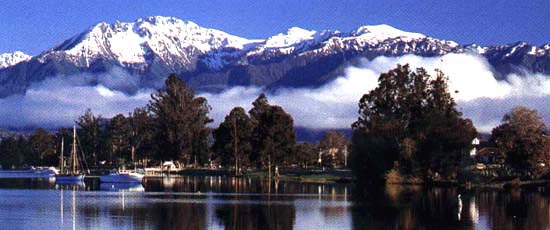 the friendliness of the people keep drawing us back. Though we had considered
a different trip for this winter, a couple we’d traveled to Peru with
approached us about going to New Zealand this winter (their summer) to hike
the Milford Track and Abel Tasman Coast Track, two of New Zealand’s “Great
Hikes.” The photo on the right was taken on our last trip at Lake Te Anau,
the starting point for the Milford Track. We hesitated for a while, given
the costs and the amount of time we’d want to take for a trip that far away.
But Michael and Cindy agreed to keep Sophie and Bella for a month and we
know we’d enjoy the other couple’s company, so we agreed this might be the
best opportunity we’d have for some time.
the friendliness of the people keep drawing us back. Though we had considered
a different trip for this winter, a couple we’d traveled to Peru with
approached us about going to New Zealand this winter (their summer) to hike
the Milford Track and Abel Tasman Coast Track, two of New Zealand’s “Great
Hikes.” The photo on the right was taken on our last trip at Lake Te Anau,
the starting point for the Milford Track. We hesitated for a while, given
the costs and the amount of time we’d want to take for a trip that far away.
But Michael and Cindy agreed to keep Sophie and Bella for a month and we
know we’d enjoy the other couple’s company, so we agreed this might be the
best opportunity we’d have for some time.
It’s taken a good month of effort
to put the trip together and it’s only just now coming together. We finally
have confirmed reservations for the plane trips, car, ferry, bus, motor home,
several motels, the huts along both tracks, and kayaks for a side trip off
the Abel Tasman Track. Unlike some previous international trips, we’re planning
this one on our own, and the logistics and planning details required have
taught me to appreciate how travel agents earn their money.
If you have a suggestion for a place or experience “not to
miss,” please let me know.
SQUIRRELS AND HUMMERS AND WINTER, OH MY!
Most of the hummingbirds who have
spent the summer at the Moirs’ have left for the winter. They are gathering
in southern Arizona or Mexico as they do annually, keeping warm there while
the temperatures drop here in the mountains. There are still a few around
who either haven’t gotten the word or need some more of Judy’s elixir to sustain
them on their migration. We’ll pull the feeders in when the last one leaves.
The squirrels in the area are gathering
all the cones of the ponderosas, lodgepoles, and firs they can get, building
up stores of food to sustain them during the coming months ahead. It’s sometimes
dangerous to walk through the woods because of the cones that fall from the
trees where the squirrels are working. Since they forget where a lot of them
were buried, it’s a form of seed gathering and planting that helps sustain
the forest.
Judy and I have followed the lead of our furry and feathered friends.
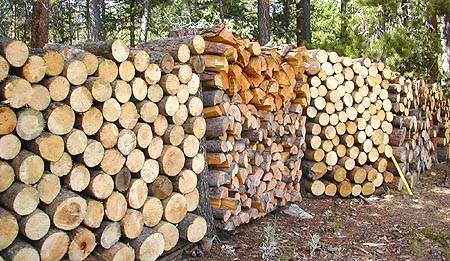 Someone—I’ve always claimed it was Robert Frost and no one has contradicted
me yet—said something like, “A person who cuts his own firewood is twice warmed.”
In that spirit, we’ve been warming ourselves mightily these past few weeks:
we combined some community service with storing up fuel by felling a dozen
or two dead/dying trees on the nearby fire department property. It rids their
property of a fire danger and adds to our woodpile. The result is several
cords of ready-to-burn wood, much of which is just the right size and doesn’t
need splitting. We saw an ad recently for an electric wood splitter, which
Judy mistakenly thought I’d like. (We both cut trees and limb them with our
individual chain saws, but since we have only one maul, I wind up doing all
the splitting.) Though the machine is a practical approach to splitting wood,
it seems a bit like cheating. Besides, it would provide no immediate warmth.
I guess Frost didn’t know about such mechanized devices when we spoke about
being “twice warmed.” (He probably wasn’t thinking of chain saws either.)
Someone—I’ve always claimed it was Robert Frost and no one has contradicted
me yet—said something like, “A person who cuts his own firewood is twice warmed.”
In that spirit, we’ve been warming ourselves mightily these past few weeks:
we combined some community service with storing up fuel by felling a dozen
or two dead/dying trees on the nearby fire department property. It rids their
property of a fire danger and adds to our woodpile. The result is several
cords of ready-to-burn wood, much of which is just the right size and doesn’t
need splitting. We saw an ad recently for an electric wood splitter, which
Judy mistakenly thought I’d like. (We both cut trees and limb them with our
individual chain saws, but since we have only one maul, I wind up doing all
the splitting.) Though the machine is a practical approach to splitting wood,
it seems a bit like cheating. Besides, it would provide no immediate warmth.
I guess Frost didn’t know about such mechanized devices when we spoke about
being “twice warmed.” (He probably wasn’t thinking of chain saws either.)
We’re also planning a reunion trip
in November with Judy’s high school girl friends and their spouses. It is
our turn to host and we chose a week in Puerto Vallarta at the Krystal Resort.
Judy and I are looking forward to returning to one of our favorite places
to visit. We look at it as another way to get ready for winter.

 we knew summer was over and our beautiful fall season was upon
us. The warmth of the summer mornings is now gone when we walk up to get the paper.
We had a drizzling rain over the weekend that washed the ground and the air
hinted at a change in temperature. (We also had a good-sized wind that knocked
out power for a few hours Monday night! All part of the charm of mountain
living.) Only a few aspens have turned yellow; some say because of our dry
summer it will not be a good year for viewing the usually golden hillsides.
We’ll see in a few weeks.) In the meantime, above 11,000' the mountains are
white with the first snow of the year. The road to the top of
Mount Evans (14,264'), the country’s
highest paved road, was closed for the season this past week, the earliest
closure in recent memory. There is a winter storm warning for the San Juans
(Silverton area) with up to 10" of snow due today and tonight. Even Denver
may get a touch of white stuff within the week, though that’s only TV weather
forecaster speculation. (Note: as I’m writing this, the very light rain
that began a half hour ago has mixed with some small but obvious flakes of
snow. It won’t last the morning, of course, but it’s confirmation that summer
has past.)
we knew summer was over and our beautiful fall season was upon
us. The warmth of the summer mornings is now gone when we walk up to get the paper.
We had a drizzling rain over the weekend that washed the ground and the air
hinted at a change in temperature. (We also had a good-sized wind that knocked
out power for a few hours Monday night! All part of the charm of mountain
living.) Only a few aspens have turned yellow; some say because of our dry
summer it will not be a good year for viewing the usually golden hillsides.
We’ll see in a few weeks.) In the meantime, above 11,000' the mountains are
white with the first snow of the year. The road to the top of
Mount Evans (14,264'), the country’s
highest paved road, was closed for the season this past week, the earliest
closure in recent memory. There is a winter storm warning for the San Juans
(Silverton area) with up to 10" of snow due today and tonight. Even Denver
may get a touch of white stuff within the week, though that’s only TV weather
forecaster speculation. (Note: as I’m writing this, the very light rain
that began a half hour ago has mixed with some small but obvious flakes of
snow. It won’t last the morning, of course, but it’s confirmation that summer
has past.)
 film). We completed our “55 Alive” driving class for the
third time (Colorado mandates reduced auto insurance rates if you take the course every
three years). We went to our Mystery Book Club meetings monthly. I joined a local “Slow
Jam” music making get-together on Thursdays (guitars, fiddles, piano, whistle, autoharp,
and mandolin: we play mostly simple Celtic and old timey stuff). These were our routines.
film). We completed our “55 Alive” driving class for the
third time (Colorado mandates reduced auto insurance rates if you take the course every
three years). We went to our Mystery Book Club meetings monthly. I joined a local “Slow
Jam” music making get-together on Thursdays (guitars, fiddles, piano, whistle, autoharp,
and mandolin: we play mostly simple Celtic and old timey stuff). These were our routines.
 I took with grandson Griffin in June. Looking back, it was a treat for
me to have that time together. I think, despite a rock in his knee and a
severe sunburn, Griffin had a good time also. The trip, by the way, was
sponsored by Elderhostel and run by the Canyonlands Field Institute. Elderhostel
plans quite a few intergenerational trips that are especially for grandparents
and grandchildren. Most are not quite as physically demanding as the one
we took, but all emphasize activities that involve children and older folks
in a variety of learning situations. The only age requirement, bedsides varying
minimum ages for kids, is that the adults must be 55 years old and want to
continue learning. Griffin saw parts of the country that he might have only
read about or seen in a book; the four corners area is a world apart from
his home and travels in New England and other places he’s visited. In addition
to the five days of rafting the San Juan, we visited Arches and Canyonlands
National Parks, plus the birthplace of Mike the Headless Chicken!
I took with grandson Griffin in June. Looking back, it was a treat for
me to have that time together. I think, despite a rock in his knee and a
severe sunburn, Griffin had a good time also. The trip, by the way, was
sponsored by Elderhostel and run by the Canyonlands Field Institute. Elderhostel
plans quite a few intergenerational trips that are especially for grandparents
and grandchildren. Most are not quite as physically demanding as the one
we took, but all emphasize activities that involve children and older folks
in a variety of learning situations. The only age requirement, bedsides varying
minimum ages for kids, is that the adults must be 55 years old and want to
continue learning. Griffin saw parts of the country that he might have only
read about or seen in a book; the four corners area is a world apart from
his home and travels in New England and other places he’s visited. In addition
to the five days of rafting the San Juan, we visited Arches and Canyonlands
National Parks, plus the birthplace of Mike the Headless Chicken!
 Judy has been a very active hiker throughout the summer. She and her
Boulder hiking friend, Betsy, have gone almost weekly into the mountains west and north of
here. Armed with field guides and binoculars, they’ve learned to identify most all of the
wildflowers of the region. It’s been a pleasure to go with them; though they take their
time, stopping and checking flowers in their field guides, together they are becoming
Judy has been a very active hiker throughout the summer. She and her
Boulder hiking friend, Betsy, have gone almost weekly into the mountains west and north of
here. Armed with field guides and binoculars, they’ve learned to identify most all of the
wildflowers of the region. It’s been a pleasure to go with them; though they take their
time, stopping and checking flowers in their field guides, together they are becoming
 real experts on the flowers of the front range. Throughout the summer their hikes included
Ouzel Falls and Twin Sisters (in Rocky Mountain NP), Pawnee Pass, Isabelle Glacier, Diamond
Lake, Arapaho Pass and Lake Dorothy, and Niwot Ridge (all in the Indian Peaks Wilderness Area).
real experts on the flowers of the front range. Throughout the summer their hikes included
Ouzel Falls and Twin Sisters (in Rocky Mountain NP), Pawnee Pass, Isabelle Glacier, Diamond
Lake, Arapaho Pass and Lake Dorothy, and Niwot Ridge (all in the Indian Peaks Wilderness Area).
 By the way, one of the most interesting animals to see in the high
country is the elusive
ptarmigan
(that’s him on the left). About the size of a small chicken, their primary means of
protection against predators is camouflage: their feather coloring changes with the
season—white in the winter, mottled in the summer—plus their habit of standing
quite still on the presumption that they aren’t or can’t be seen. When you do spot them
you can walk quite close to them because they think they’re invisible! I took this picture
from about three feet away. The rest of the “family,” including several young chicks were
equally still within ten feet of each other. I’ve never seen one fly or move very quickly,
though I assume they can and do when necessary.
By the way, one of the most interesting animals to see in the high
country is the elusive
ptarmigan
(that’s him on the left). About the size of a small chicken, their primary means of
protection against predators is camouflage: their feather coloring changes with the
season—white in the winter, mottled in the summer—plus their habit of standing
quite still on the presumption that they aren’t or can’t be seen. When you do spot them
you can walk quite close to them because they think they’re invisible! I took this picture
from about three feet away. The rest of the “family,” including several young chicks were
equally still within ten feet of each other. I’ve never seen one fly or move very quickly,
though I assume they can and do when necessary.
 the friendliness of the people keep drawing us back. Though we had considered
a different trip for this winter, a couple we’d traveled to Peru with
approached us about going to New Zealand this winter (their summer) to hike
the Milford Track and Abel Tasman Coast Track, two of New Zealand’s “Great
Hikes.” The photo on the right was taken on our last trip at Lake Te Anau,
the starting point for the Milford Track. We hesitated for a while, given
the costs and the amount of time we’d want to take for a trip that far away.
But Michael and Cindy agreed to keep Sophie and Bella for a month and we
know we’d enjoy the other couple’s company, so we agreed this might be the
best opportunity we’d have for some time.
the friendliness of the people keep drawing us back. Though we had considered
a different trip for this winter, a couple we’d traveled to Peru with
approached us about going to New Zealand this winter (their summer) to hike
the Milford Track and Abel Tasman Coast Track, two of New Zealand’s “Great
Hikes.” The photo on the right was taken on our last trip at Lake Te Anau,
the starting point for the Milford Track. We hesitated for a while, given
the costs and the amount of time we’d want to take for a trip that far away.
But Michael and Cindy agreed to keep Sophie and Bella for a month and we
know we’d enjoy the other couple’s company, so we agreed this might be the
best opportunity we’d have for some time.
 Someone—I’ve always claimed it was Robert Frost and no one has contradicted
me yet—said something like, “A person who cuts his own firewood is twice warmed.”
In that spirit, we’ve been warming ourselves mightily these past few weeks:
we combined some community service with storing up fuel by felling a dozen
or two dead/dying trees on the nearby fire department property. It rids their
property of a fire danger and adds to our woodpile. The result is several
cords of ready-to-burn wood, much of which is just the right size and doesn’t
need splitting. We saw an ad recently for an electric wood splitter, which
Judy mistakenly thought I’d like. (We both cut trees and limb them with our
individual chain saws, but since we have only one maul, I wind up doing all
the splitting.) Though the machine is a practical approach to splitting wood,
it seems a bit like cheating. Besides, it would provide no immediate warmth.
I guess Frost didn’t know about such mechanized devices when we spoke about
being “twice warmed.” (He probably wasn’t thinking of chain saws either.)
Someone—I’ve always claimed it was Robert Frost and no one has contradicted
me yet—said something like, “A person who cuts his own firewood is twice warmed.”
In that spirit, we’ve been warming ourselves mightily these past few weeks:
we combined some community service with storing up fuel by felling a dozen
or two dead/dying trees on the nearby fire department property. It rids their
property of a fire danger and adds to our woodpile. The result is several
cords of ready-to-burn wood, much of which is just the right size and doesn’t
need splitting. We saw an ad recently for an electric wood splitter, which
Judy mistakenly thought I’d like. (We both cut trees and limb them with our
individual chain saws, but since we have only one maul, I wind up doing all
the splitting.) Though the machine is a practical approach to splitting wood,
it seems a bit like cheating. Besides, it would provide no immediate warmth.
I guess Frost didn’t know about such mechanized devices when we spoke about
being “twice warmed.” (He probably wasn’t thinking of chain saws either.)
